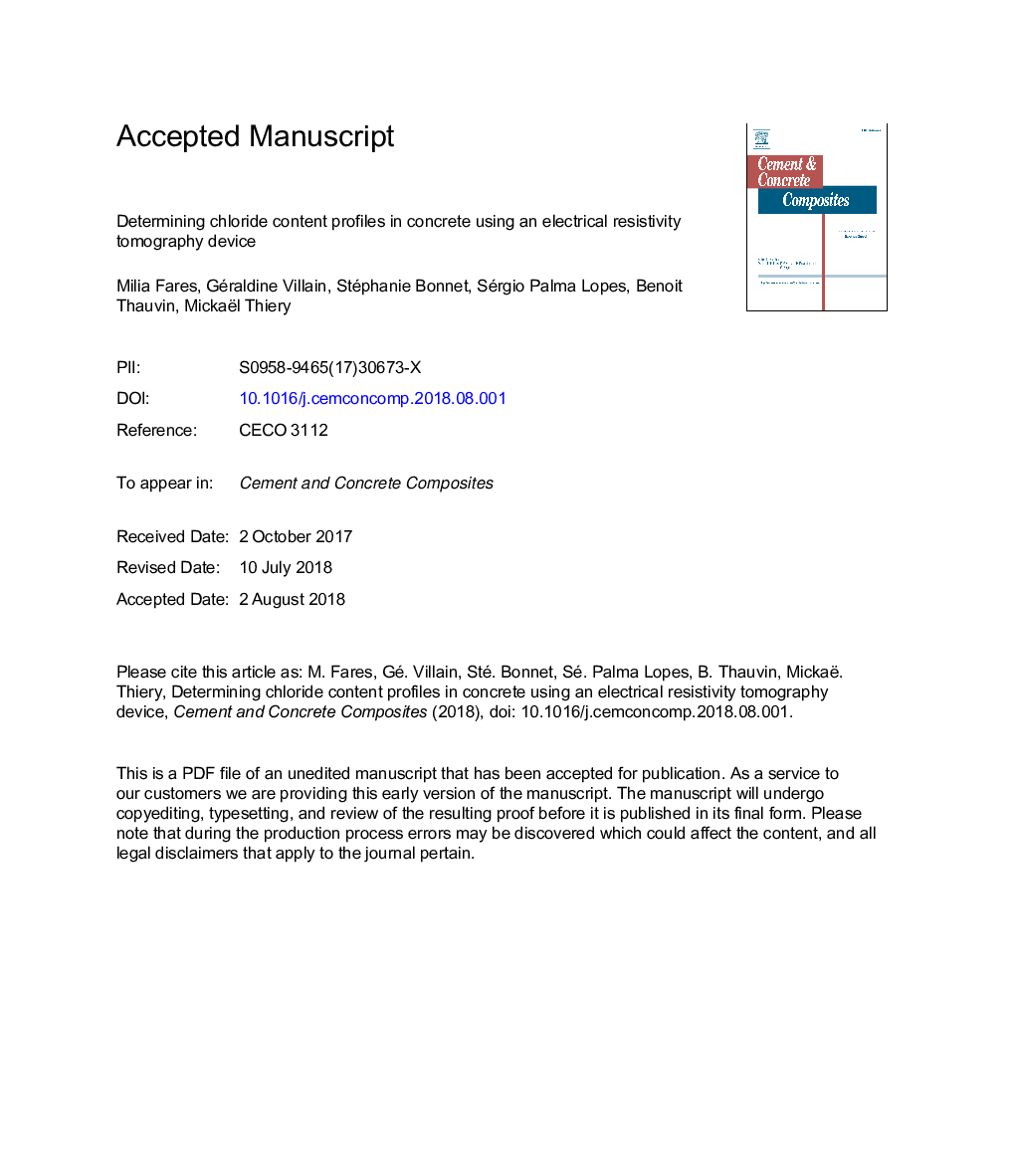| Article ID | Journal | Published Year | Pages | File Type |
|---|---|---|---|---|
| 11032818 | Cement and Concrete Composites | 2018 | 31 Pages |
Abstract
Chloride penetration in concrete can lead to steel corrosion which is one of the major pathologies affecting reinforced concrete's durability. The development of methods to investigate chloride penetration is essential to predict and update the service life of the structure. A non-destructive (ND) DC-electrical technique is used in this study: this Electrical Resistivity Tomography (ERT) device is arranged in a Wenner configuration and measures apparent resistivities. Apparent resistivities are then inverted in order to obtain a resistivity profile versus depth. In parallel, a calibration method relating the resistivity to the chloride content for each type of concrete is used to obtain the chloride profile versus depth. This methodology was applied to a chloride diffusion experimental program on two concrete formulations and one mortar. The profiles evaluated by NDT are then compared to those obtained by a destructive method (potentiometric titration). Both types of profile fit relatively well, thus, the presented methodology is validated for determining chloride content profiles by means of a non-destructive ERT device. The evaluation of the uncertainty range of successive processes (measurement, inversion and calibration) underlines the importance on including the uncertainties in the interpretation of the ND profiles in future research.
Related Topics
Physical Sciences and Engineering
Engineering
Industrial and Manufacturing Engineering
Authors
Milia Fares, Géraldine Villain, Stéphanie Bonnet, Sérgio Palma Lopes, Benoit Thauvin, Mickaël Thiery,
